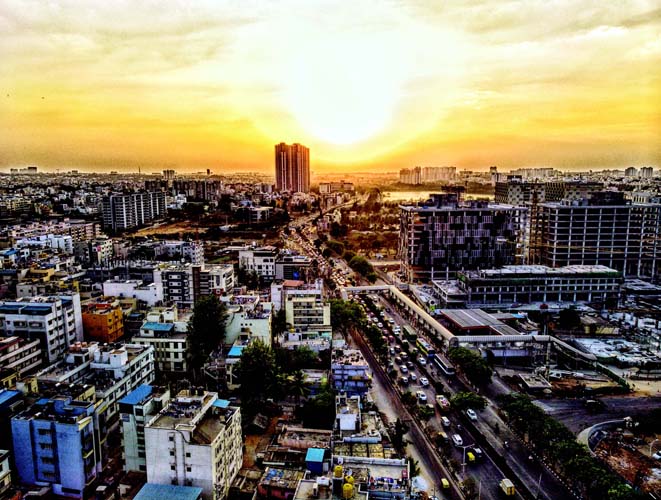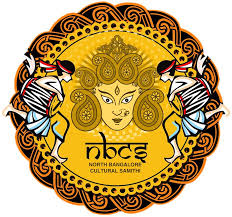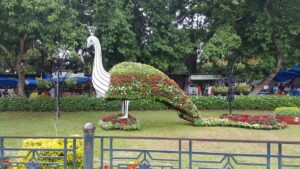
A global centre for software innovation, startups, and IT exports, Bangalore, now known as Bengaluru, is frequently referred to as the “Silicon Valley of India.” Beyond the glittering tech parks and busy coworking spaces, however, is a city with rich cultural traditions in terms of language, food, celebrations, and communal ideals. Bangalore’s identity has changed dramatically over the last few decades as a result of the growing impact of IT culture.
A distinctive urban phenomenon has been produced by the combination of traditional lifestyle and the quick digital revolution. Bangalore is at the nexus of tradition and technology, as seen by shifting family relationships, modified holiday festivities, and even altering eating and fashion preferences. This blog examines how Bangalore’s traditional social, cultural, and lifestyle standards are being altered by computer culture.
The Tech Boom: A Turning Point in Bangalore’s Identity
With the creation of IT parks like Electronic City and Whitefield in the 1980s, Bangalore started to change. In the 1990s and 2000s, international corporations moved into the city. A large number of experts from all over India and elsewhere moved to the city. The traditional Kannada-dominated society was impacted by the linguistic, cultural, and ideological mingling brought about by this immigration.
Over a million IT workers, thousands of companies, and a thriving digital economy may all be found in Bangalore today. Although this expansion has fuelled economic development, it has also had a significant impact on the city’s traditional way of life.
Language and Communication: A Shift from Kannada to English
One of the most visible impacts of tech culture in Bangalore is the shift in language usage. English, once limited to schools and official settings, has become the dominant medium of communication—especially in professional, educational, and social circles.
Although Kannada is still widely spoken in the area, younger people—particularly those in the IT industry—are using English more and more in their everyday interactions. Languages have blended as a result, with Kannada-English, often known as Kanglish, becoming the standard in urban discourse.
Cultural activists worry that native language pride and identity are being undermined, despite the fact that this linguistic transition promotes inclusion for migrants.
Festivals and Celebrations: Blending Digital and Traditional
Traditional festivals in Bangalore, such as Karaga, Dasara, Ugadi, and Deepavali, are still enthusiastically observed, although the style of celebration has changed.
- For many working professionals, traditional invitations and temple visits have been supplanted by online greetings and e-puja applications.
- Due to hectic schedules or distant family structures, many increasingly take part in virtual community festivities or live-stream temple activities.
- With a focus on aesthetics and hashtags, social media sites like Facebook and Instagram have transformed festivals into photo-sharing occasions.
At the same time, multicultural events are frequently held by apartment societies in tech-heavy areas like Electronic City, Whitefield, and Sarjapur Road. These events promote solidarity while lessening the exclusivity of traditional rituals by fusing local customs with pan-Indian and international celebrations, such as Onam, Durga Puja, Christmas, and Sankranti.
Work Culture and Lifestyle Changes
Bangalore’s everyday routine has been drastically changed by the contemporary digital work culture, which is characterised by long hours, international clientele, and weekend sprints. Digital nomadism, hybrid models, and flexible work schedules have replaced traditional 9–5 routines.
This has affected several aspects of traditional life:
- Joint families are increasingly being replaced by nuclear setups, especially among young tech couples.
- Weekend temple visits or family outings are often replaced with treks, brunches, and streaming sessions.
- Traditional attire like sarees and dhotis is often reserved for weddings or cultural days, while business casuals and western wear dominate everyday fashion.
Although modernity and convenience are brought about by these developments, many elderly people feel out of step with the changing pace of life.
Culinary Shifts: From Ragi Mudde to Sushi and Beyond
Bangalore’s traditional cuisine, which was formerly centred on dishes like ragi mudde, bisibele bath, uppittu, and saaru, has changed dramatically as a result of exposure to other cultures and hectic lives.
- International cuisines are now easily accessible thanks to the growth of meal delivery apps like Swiggy and Zomato.
- Frequently used in place of home-cooked meals, cafes and cloud kitchens serve vegan burgers, Mediterranean falafels, and Korean bibimbap.
- Younger professionals are moving away from traditional home-cooked meals due to the tendency of ordering takeaway or dining out, with the exception of festivals and trips to grandparents’ houses.
But this change has also given rise to revivalist groups. In order to preserve Bangalore’s culinary legacy, a number of home cooks and food bloggers are reviving classic dishes with a contemporary twist.
Traditional Arts and Digital Expression
Although storytelling, dancing, and folk music were formerly communal pursuits, they are now more and more computerised. These days, websites like Instagram Reels, Spotify, and YouTube host:
- Fusion folk performances that combine hip-hop and EDM with Dollu Kunitha or Veeragase;
- virtual theatre plays; and online classical dance recitals
- Instruction in traditional music and crafts for a worldwide audience
There are two sides to this digitisation of tradition: although it increases engagement and reach, it occasionally sacrifices authenticity and depth in favour of trends and visibility.
Urbanization, Infrastructure, and Cultural Spaces
Bangalore’s infrastructure has rapidly expanded due to tech-driven urban growth, although frequently at the expense of traditional spaces:
- Glass buildings, shopping centres, and highways have encircled ancient temples, old marketplaces, and lakes;
- iconic cultural centres like Ravindra Kalakshetra and Chitrakala Parishath continue to flourish, but now face competition from tech-sponsored cultural festivals and corporately supported art events.
Thankfully, there is a rising trend among young artists and entrepreneurs to combine innovation and legacy. Examples include showcasing Kannada poetry at coworking cafés or narrating historical stories about Bangalore using augmented reality.
Positive Outcomes of the Tech-Tradition Fusion
Despite reservations, innovative preservation has also resulted from the combination of technology and tradition:
- Non-native speakers may learn Kannada with apps like Kaapi and Kannada Baruthe.
- Online marketplaces help rural craftsmen by offering handmade Ilkal sarees, Channapatna toys, and Bidriware for sale.
- Through volunteering and crowdsourcing, tech workers assist local farming efforts, temple protection, and rural Karnataka tourism.
A modern yet grounded Bangalore, where tradition is not ignored but rather reinterpreted, is gradually being created by this combination.
Conclusion
The story of how Bangalore’s customs have been impacted by tech culture is intricate and continuous. The city is constantly changing and neither completely old nor completely contemporary. Bangalore offers impressive examples of adaptive resilience, despite the fact that issues like cultural dilution and lifestyle changes are genuine.
Bangalore will remain a place where startups and narrative, code and culture, and algorithms and art can coexist peacefully as long as there is a deliberate attempt to strike a balance between innovation and respect for legacy.
Tradition is still there in this dynamic city; it is only taking on a new shape.





Leave a Reply